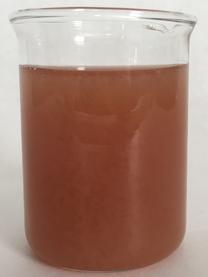 Nitrifier production tank biomass
Nitrifier production tank biomass It all has to do with AOB & NOB having slow growth rates under all conditions that become more exagerated under low temperature conditions. Secondly, genera that oxidize ammonia/nitrite are mesophilic organisms that don't do well at temperatures under 10 - 12 Deg C.
Nitrifier Growth Rates
Ammonia Oxidizing Bacteria (AOB) - often a mix of Nitrosomonas, Nitrospira (the COMAMMOX subset), Nitrosococcus - are the slowest growing of the chemotrophic nitrifiers. That means the initial conversioni of ammonia into nitrite is usually the rate limiting step. The AOB growth under ideal conditions (D.O. > 2 at cell level, pH 7.2 - 8.2, sufficient alkalinity, and no inhibition) maxes out at 10 - 12 hours versus 30 - 60 minutes for many heterotrophic (BOD removing) organisms. AOB ideal growth happens between 25 - 30 deg C. As you decrease temperature below 20 Deg C, time required for cell replication increases and if operating at a low MCRT, you may see the AOB population "washout".
More on Temperature Impact on Nitrifier Population
Nitrifiers growth slows as you drop below 20 deg C and is so slow that by 10 Deg C that we consider the cultures dormant. Unlike the heterotrophic populations that can adjust to lower temperatures with low range mesophiles and some psychrophiles that thrive at temperatures between 3 - 15 deg C. The increase in lower temperature heterotrophic organisms is the reason that you can keep BOD removal even with low temperature wastewater. In fact, I have worked with cultures that grow well at 5 deg C.
Ways to keep nitrification at low temperatures
Now that you know why nitrification is a problem at lower temperatures, what can you do to keep ammonia from reaching the effluent? Here are some suggestions:
- Increase MCRT to avoid washout
- Keep pH, Alkalinity, and D.O. at ideal levels
- Try to keep inhibitory compounds amines, sulfides, phenol, solvents, and other inhibitory compounds out of the biological unit as much as possible
- Moving from surface aeration to diffusers can help "insulate" and reduce temperature drop across the biological unit

 RSS Feed
RSS Feed